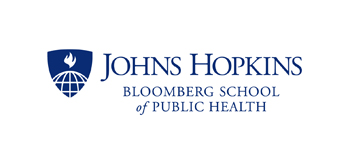Newswise — Despite increased use of telemedicine during the COVID-19 pandemic, Americans have had significantly fewer consultations with primary care doctors and markedly fewer assessments of common cardiac risk factors, according to a new study led by researchers at Johns Hopkins Bloomberg School of Public Health.
The study found that the number of primary care consultations fell by more than 21 percent during the second quarter of 2020, compared with the average second-quarter visit volume from the second quarters in 2018 and 2019. That drop in 2020 occurred despite a large, simultaneous surge in telemedicine—which increased from almost zero in prior years to about 35 percent of primary care visits from April through June 2020.
The study, based on an ongoing audit of outpatient care in the U.S., also found that the frequency of blood pressure and cholesterol assessments dropped by about 50 percent and 37 percent, respectively. These assessments, important tools for detecting elevated cardiovascular disease risks, typically require in-person care.
The results suggest a potential collateral effect of the COVID-19 pandemic—greater undiagnosed cardiovascular disease and less risk-factor monitoring than typically takes place through office-based primary care.
The study will be published October 2 in JAMA Network Open.
“These results indicate that there has been a significant decline in primary care use, at least in the early phases of the pandemic, and that telemedicine is an imperfect substitute for many office-based consultations,” says study lead author G. Caleb Alexander, MD, a practicing internist and professor in the Department of Epidemiology at the Bloomberg School.
The COVID-19 pandemic has caused directly more than one million deaths worldwide, more than 200,000 have occurred in the U.S. Social distancing policies as well as health-system restructuring to prioritize COVID care and reduce the potential for health care-related transmission have led to sharp reductions in the activities of ordinary life including routine doctor’s visits. During this period, there has also been increased reliance on telemedicine, in which doctors consult with their patients via telephone or the internet, but the precise impact of telemedicine on the level and content of primary care delivery has been unclear.
For their study, Alexander and colleagues examined the National Disease and Therapeutic Index (NDTI), a nationally representative audit of outpatient care conducted by IQVIA, a health care technology company.
One key finding was that the estimated number of primary care consultations fell from an estimated average of 126.3 million per quarter in the second quarters of 2018 and 2019 to 99.3 million during April through June 2020, the first full quarter following the start of the COVID-19 crisis in the U.S.
That represents a drop of 21.4 percent, and the findings indicate that this drop occurred despite an unprecedented surge in telemedicine use—from 1.1 percent of total visits in 2Q-2018 and 2Q-2019 to 35.3 percent in 2Q-2020.
The analysis also showed that the estimated number of office-based primary care visits declined by 50.2 percent from the second quarter 2Q-2018/2019 average to 2Q-2020.
The researchers examined several assessments or interventions that are commonly performed during primary care consultations, and again found large declines from the 2Q-2018/2019 averages to 2Q-2020. These included a 26.0 percent drop in visits where a medicine was initiated or renewed, as well as a 50.1 percent decline in blood pressure checks and a 36.9 percent decline in blood cholesterol tests.
The large declines in blood pressure and cholesterol checks during the pandemic reflect both a decrease in overall primary care visit volume as well as the less common assessment of these cardiac risk factors during telemedicine consultations.
“These are not trivial declines: They are large, clinically important declines involving two of the most fundamental elements of primary care—the prevention of heart attacks and strokes,” Alexander says. “So these findings raise serious concerns regarding the collateral effects of the COVID-19 pandemic on cardiovascular disease prevention in the United States.”
“Use and Content of Primary Care Office-Based vs Telemedicine Care Visits During the COVID-19 Pandemic in the US” was written by Caleb Alexander, Matthew Tajanlangit, James Heyward, Omar Mansour, Dima Qato, and Randall Stafford.
Disclosures: Caleb Alexander is past Chair of FDA’s Peripheral and Central Nervous System Advisory Committee; has served as a paid advisor to IQVIA; is a co-founding principal and equity holder in Monument Analytics, a health care consultancy whose clients include the life sciences industry as well as plaintiffs in opioid litigation; and is a member of OptumRx’s National P&T Committee.
# # #
MEDIA CONTACT
Register for reporter access to contact detailsCITATIONS
JAMA Network Open
